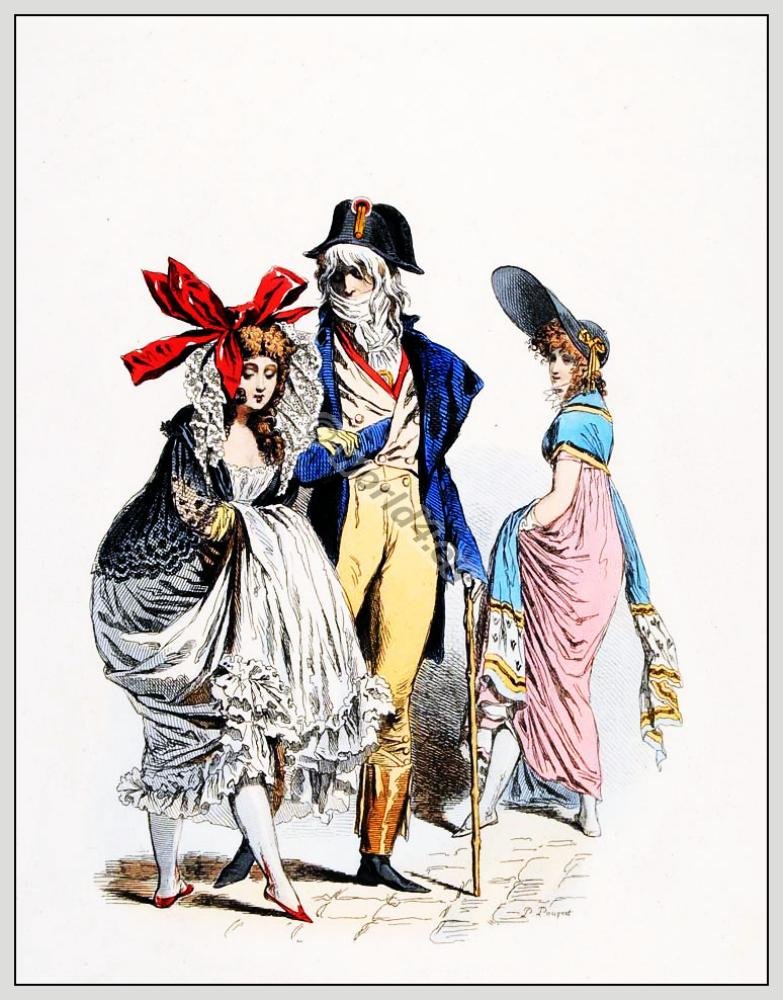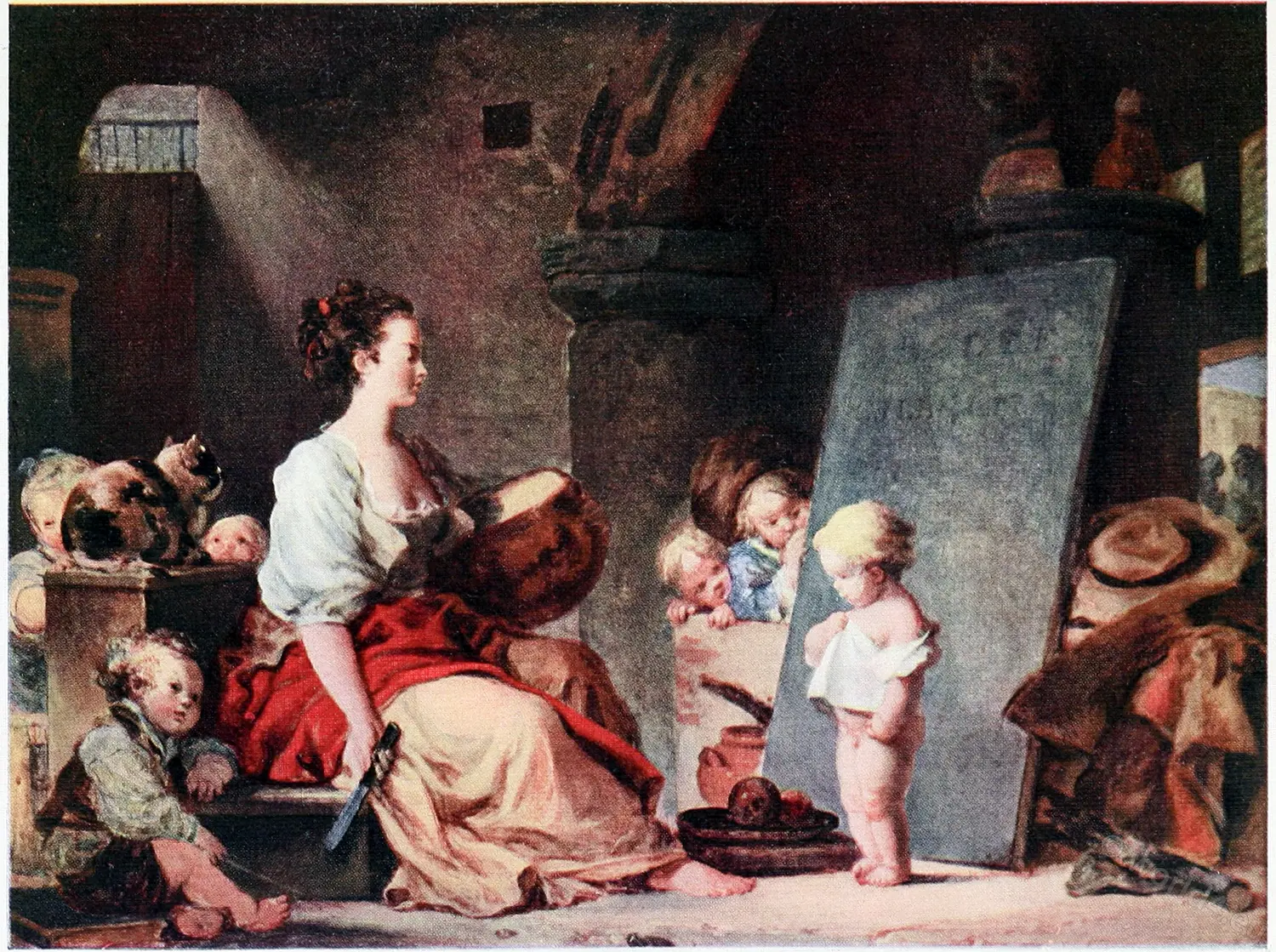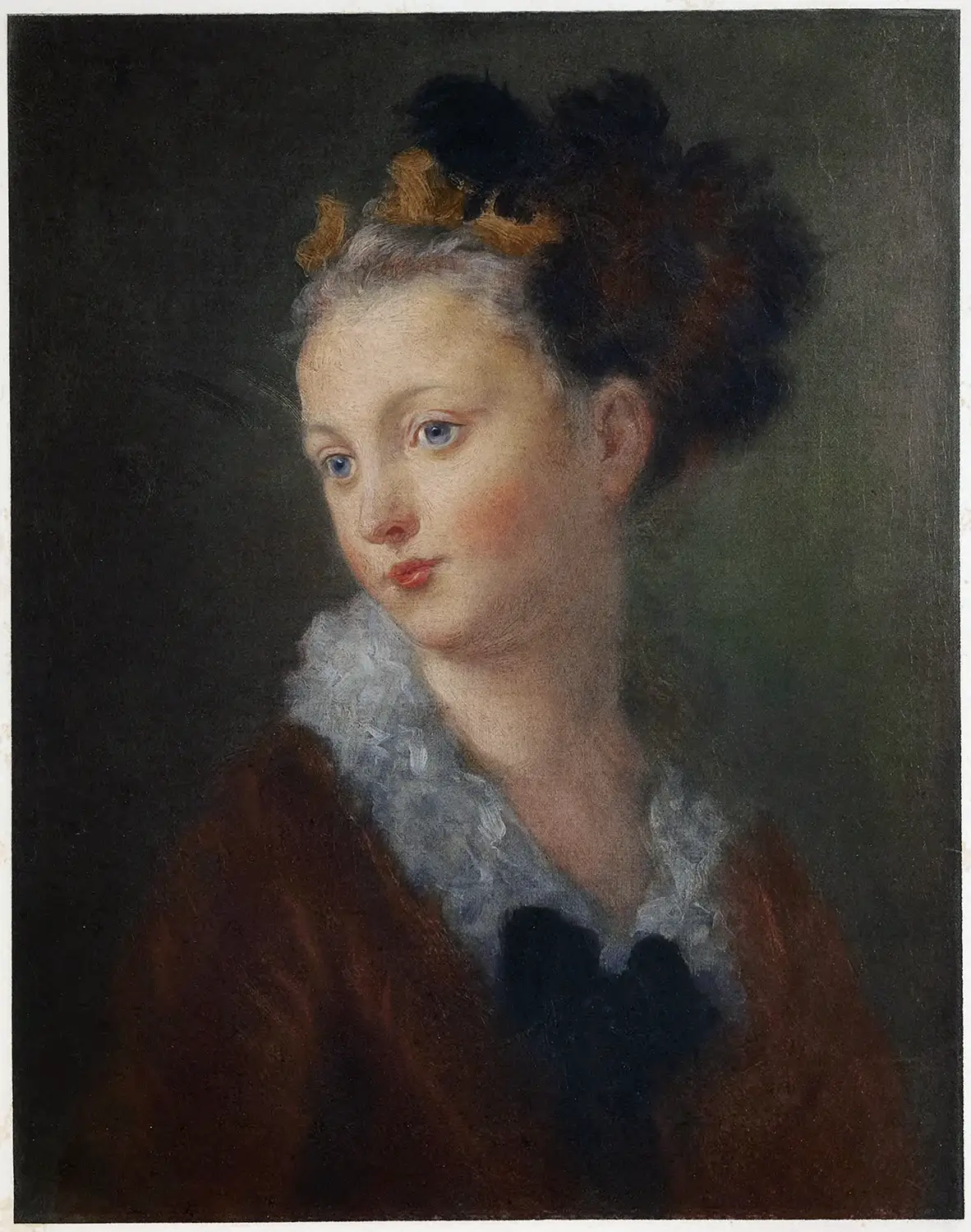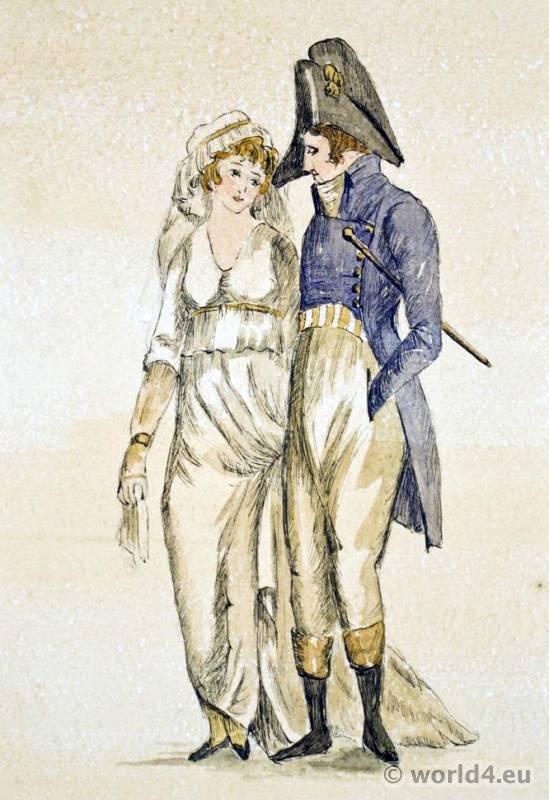
“Despite the implacable hatred of anything verging upon “aristocratisme” and despite the suspicion which was apt to attach to anyone but a “sans-culotte” (without breeches), the desire for the novel, if not the beautiful, in dress could not be kept down and, as a consequence, the French Revolution gave us two remarkable and distinctive modes, the “Incroyable” and the “Directoire,” and laid the foundations of what are known as the First Empire styles. “
Pen-Portrait of an Incroyable by Honore de Balzac.
“Incroyable” (incredible) was the sobriquet given to the fops or dandies of the later Revolutionary period. Here is the description of one of these remarkably dressed personages as given by the French writer, Honore de Balzac:
The costume of his unknown presented an exact picture of the fashion which at that time called forth the caricatures of the Incroyables. Imagine a person muffled in a coat so short in front that there showed beneath five or six inches of the waistcoat and with skirts so long behind that they resembled a codfish tail, a term then commonly employed to designate them.
An immense cravat formed round his neck such innumerable folds that the little head emerging from a labyrinth of muslin almost justified Captain Merle’s kitchen simile. (Merle had described the Incroyable as looking “like a duck with its head protruding from a game pie.“) The stranger wore tight breeches and boots à la Suwarrow; a huge white and blue cameo was stuck, as a pin, in his shirt. Two watch chains hung in parallel festoons at his waist, and his hair, hanging in corkscrew curls on each side of the face, almost hid his forehead.

Finally, as a last touch of decoration, the collars of his shirt and his coat rose so high that his head presented the appearance of a bouquet in its paper wrappings. If there be added to these insignificant details, which formed a mass of disparities with no ensemble, the absurd contrast of his yellow breeches, his red waistcoat, his cinnamon brown coat, a faithful portrait will be given of the height of fashion at which dandies aimed at the beginning of the Consulate Preposterous as the costume was, it seemed to have been invented as a sort of touchstone of elegance to show that nothing can be too absurd for fashion to hallow it.





